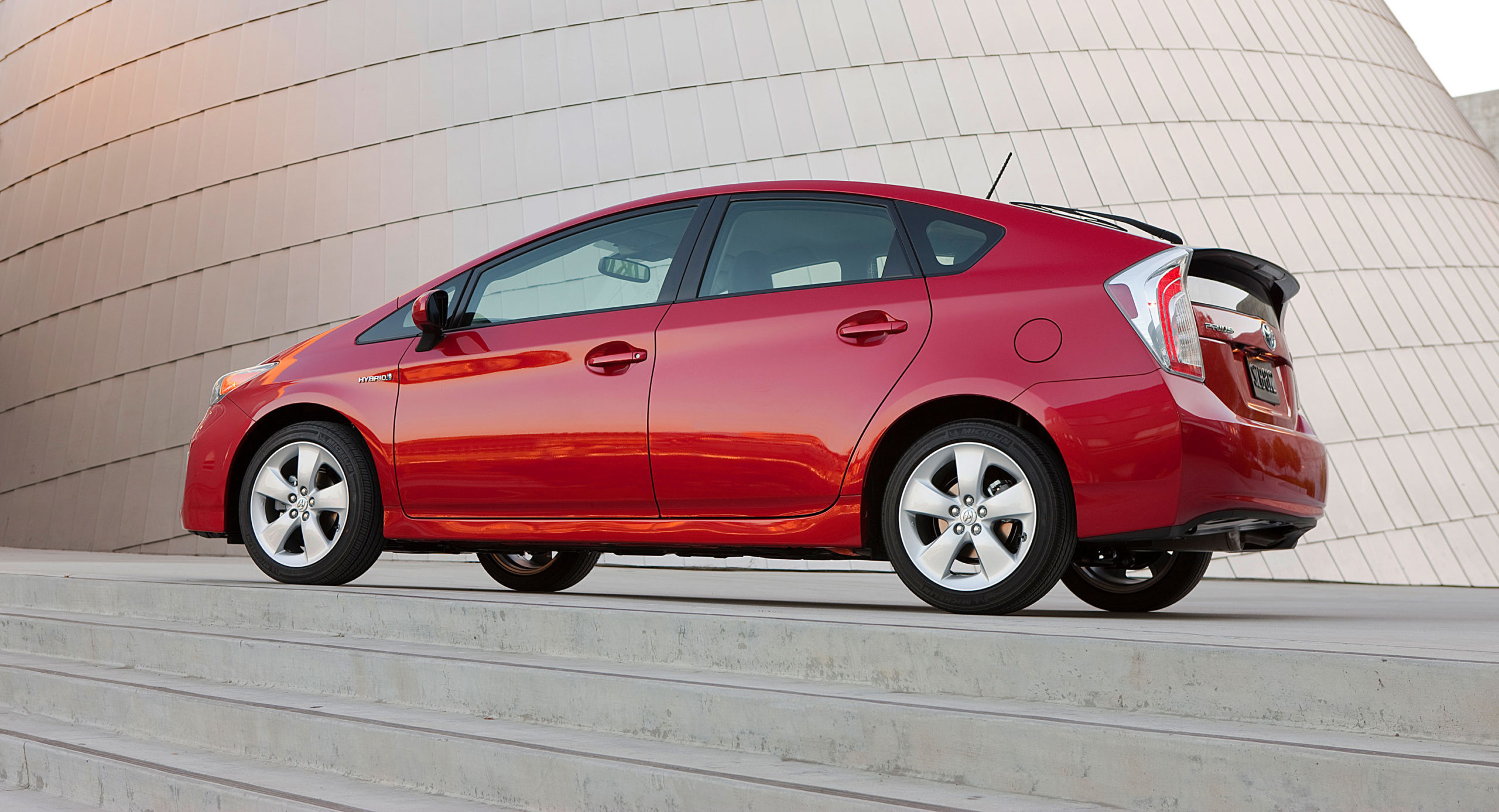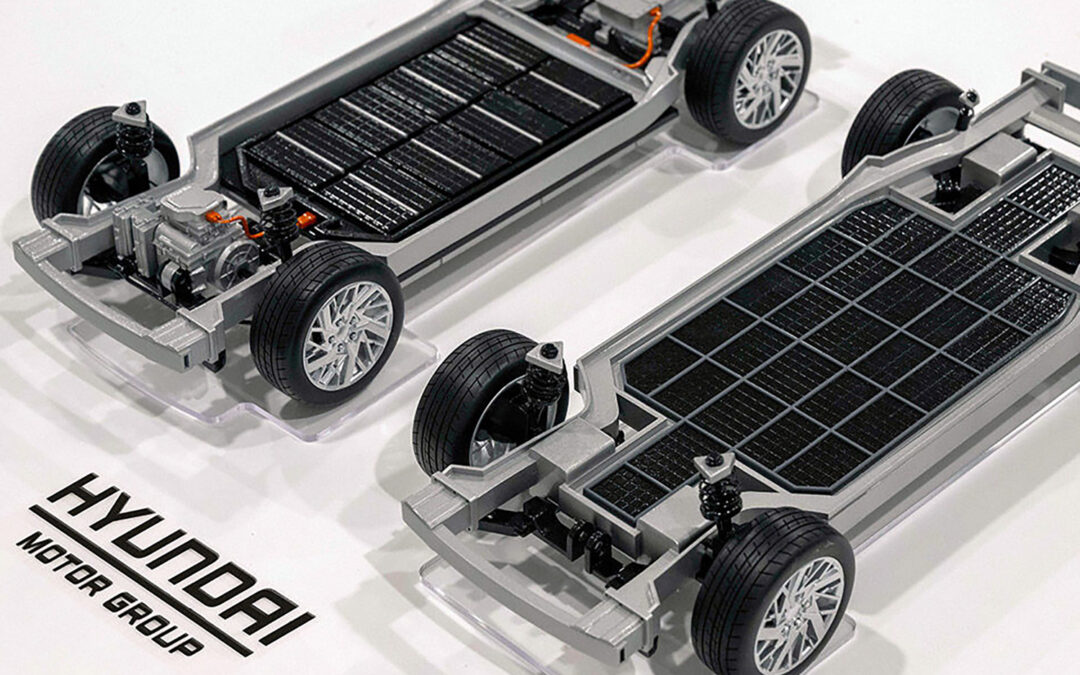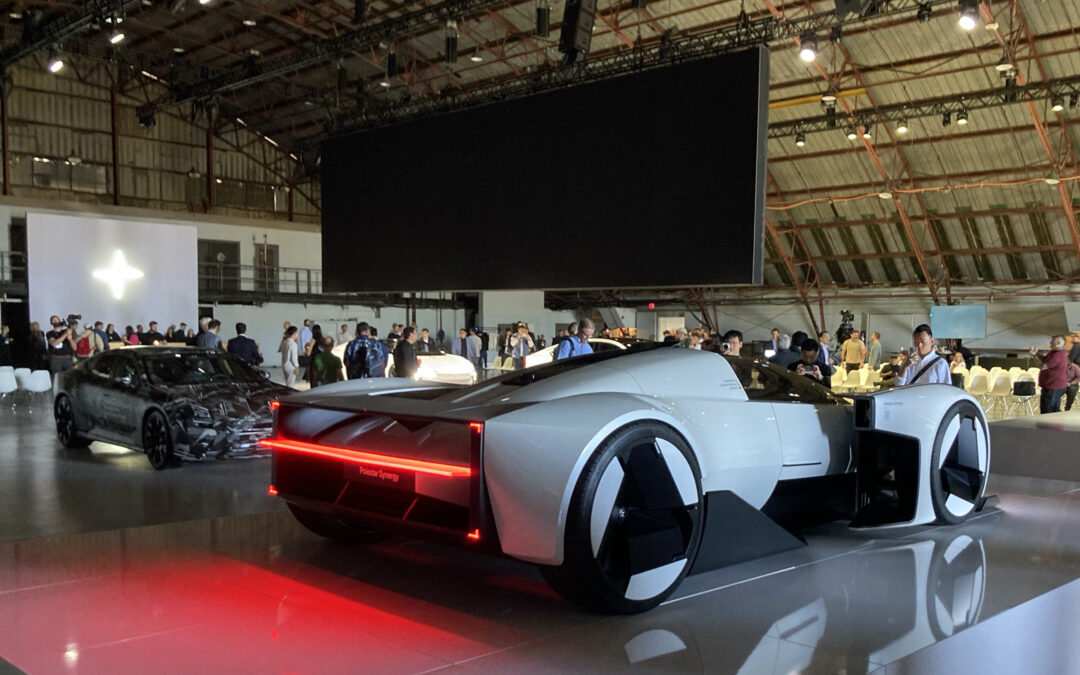In 2010, Toyota rolled out the third generation of its Prius hybrid, a car that over the previous decade had become a household name for its well-engineered, fuel-efficient gas-electric powertrain.
The third-gen Prius was also the first Toyota to offer PHEV capability in the uncreatively named Prius Plug-In introduced in 2012.
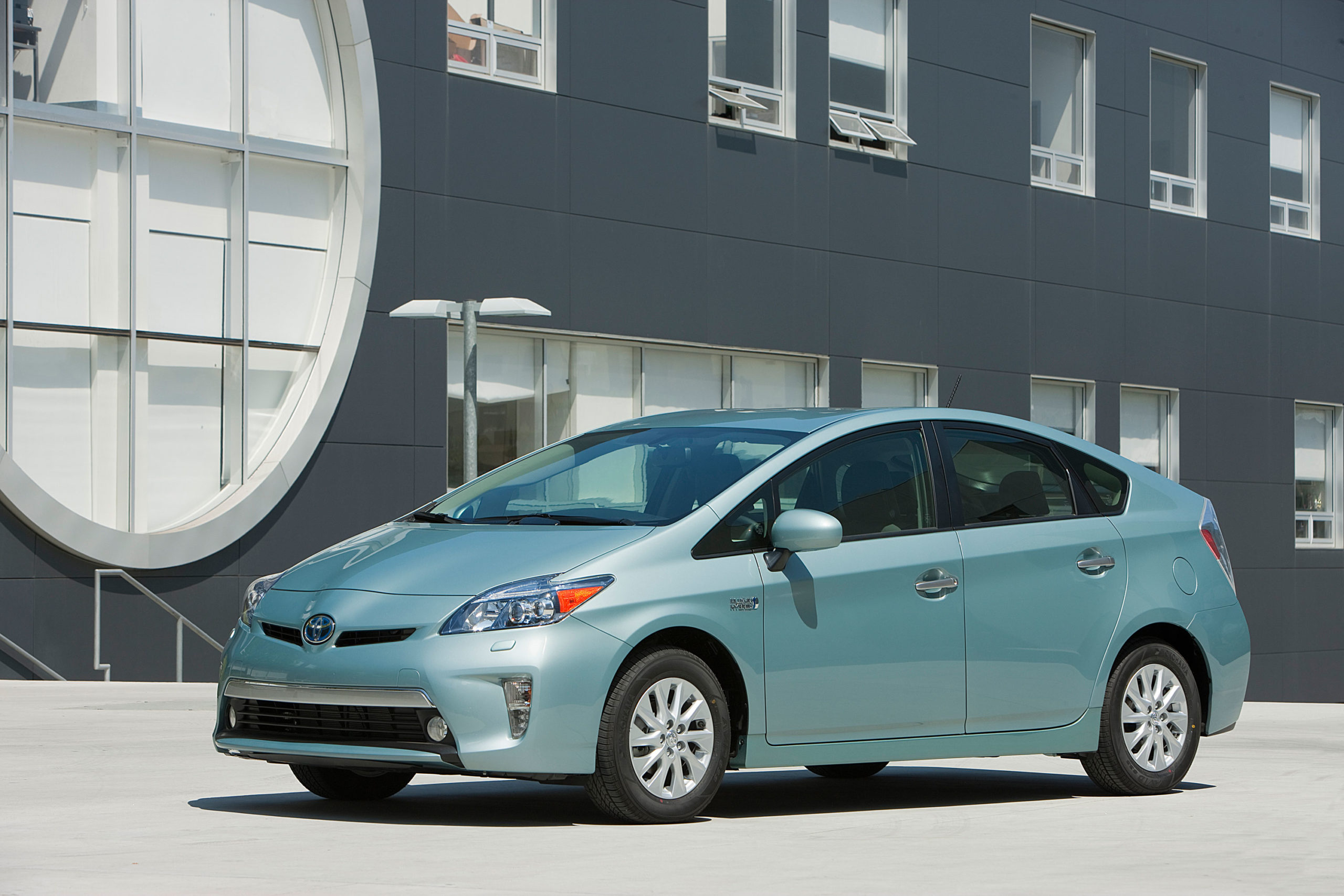
2012 Toyota Prius Plug-In
Specifications and fuel consumption ratings
The redesigned 2010 Toyota Prius got a new drivetrain consisting of a 1.8L four-cylinder engine and an almost completely re-engineered hybrid drive system, which provided 22 per cent more power – 134 hp – and a 7 per cent improvement in fuel economy compared to the outgoing generation.
The Prius Plug-In used a higher-capacity battery with plug-in charging capability, but otherwise provided the same performance as its non-plug-in sibling.
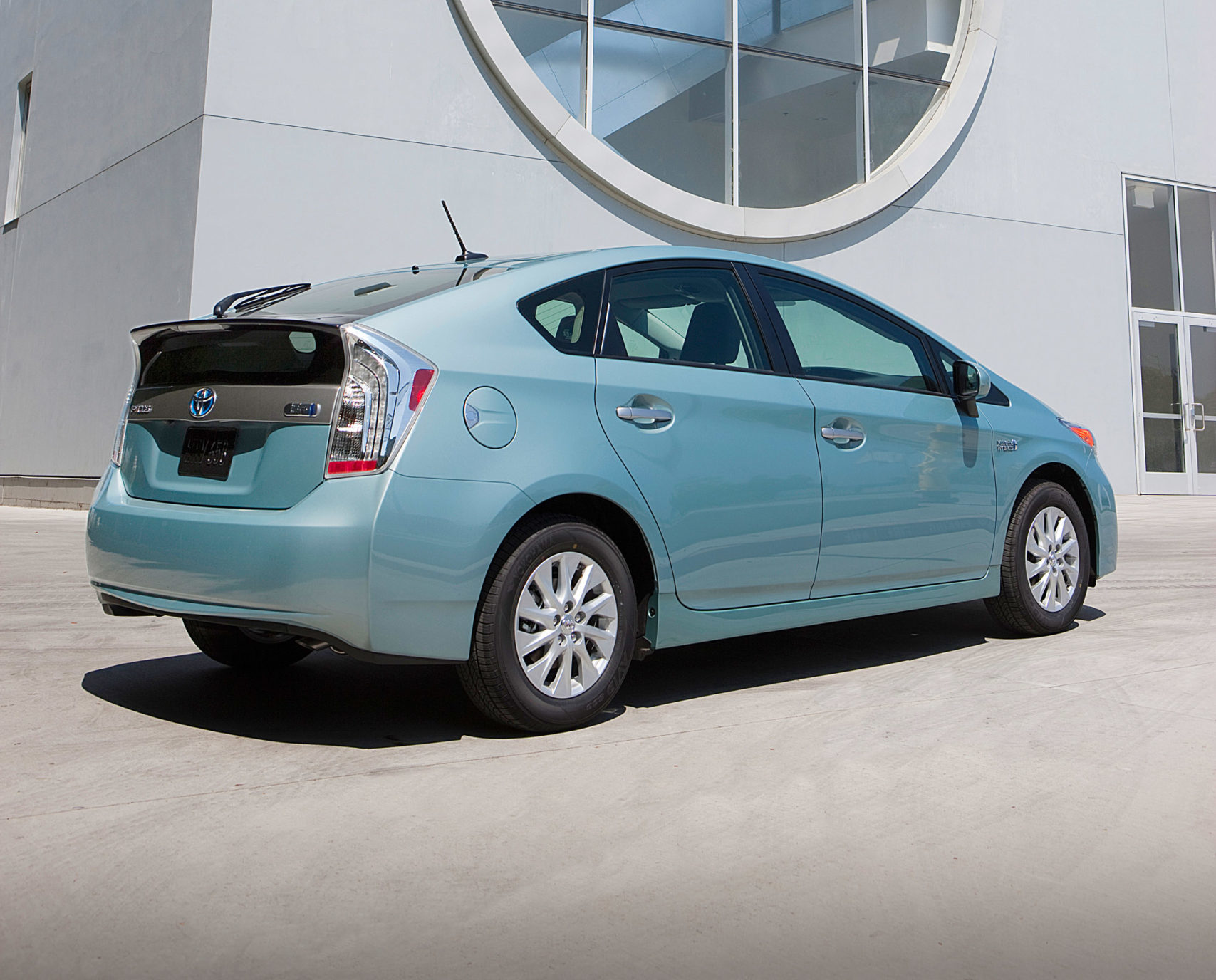
2012 Toyota Prius Plug-In
Throughout its run, the third-generation Prius’s fuel consumption estimates were 4.7/4.9 L/100 km (city/highway). The Prius Plug-In got similar ratings of 4.7/4.8 L/100 km (city/highway) when running as a hybrid, and a 2.5 Le/100 km estimate when driving on electricity alone. Toyota says the Prius Plug-In could go 18 km on a full charge of its battery.
Note that we’re limiting our discussion here to the “standard” Prius mid-size hatchback. We’ll cover the larger Prius V station wagon and smaller Prius C subcompact hatchback in future articles.
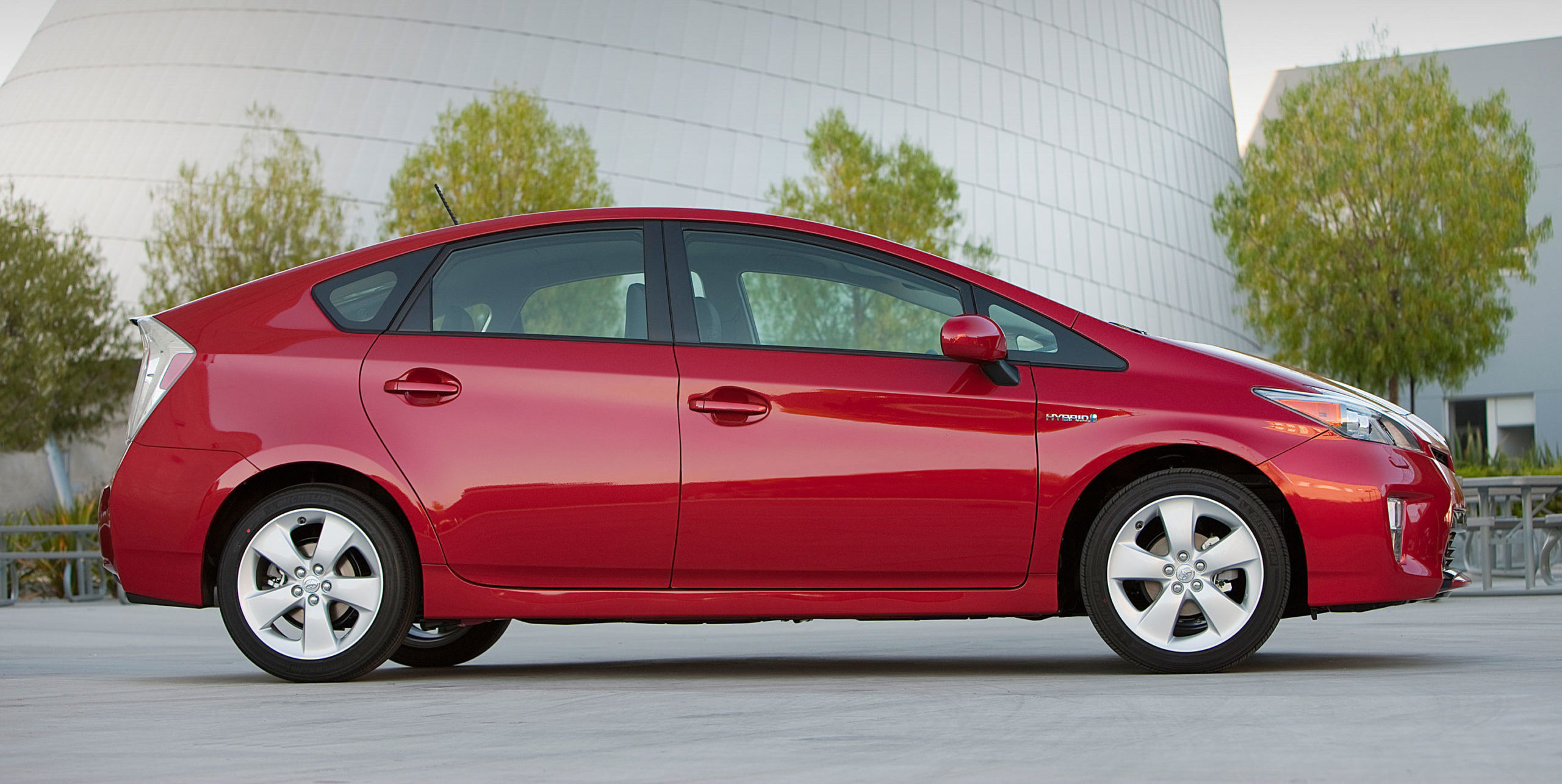
2012 Toyota Prius
Used pricing
According to Carfax Canada, used third-generation Prius values start at about $7,500 for a 2010 base model, while a 2015 is worth a bit more than double that, at $15,400. A 2012 Prius Plug-In is valued at $11,200, and a 2013 is worth nearly $12,000. Those are the only years of the Plug-In model for which Carfax has resale prices.
Trim levels and features
In 2010, the Toyota Prius came equipped with 15-inch alloy wheels, automatic A/C, passive keyless entry (driver’s door only), touch-sensitive steering wheel buttons, heated side mirrors, and automatic headlights.
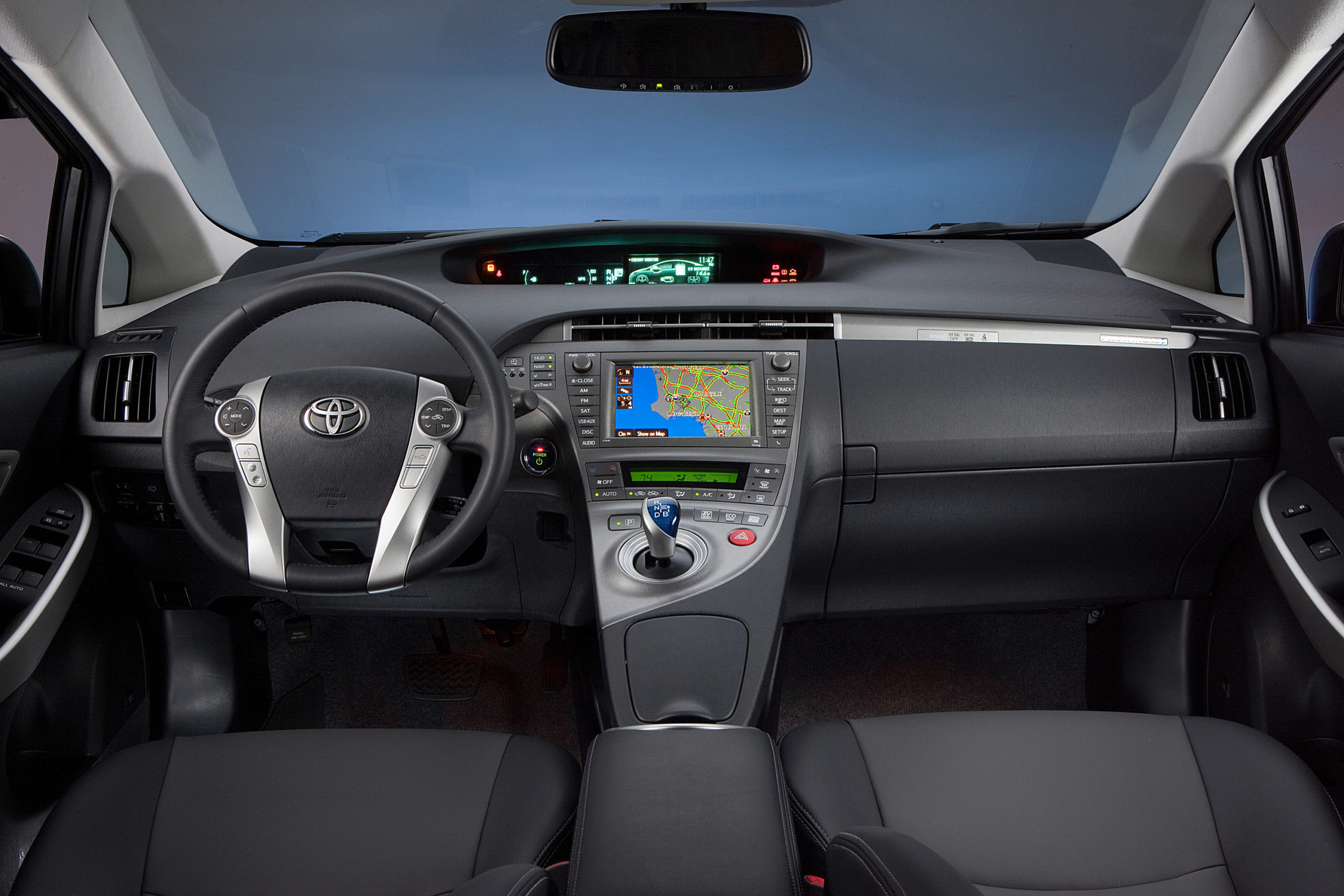
A premium package added an upgraded stereo, Bluetooth, satellite radio, a garage door remote, auto-dimming rearview mirror, a backup camera, and front passenger door passive unlocking. Premium package buyers could also add solar panels that power the A/C while the car is parked.
Next up was a touring package consisting of 17-inch wheels, fog lights, and auto-levelling LED headlights with washers. Finally, a tech package brought navigation, forward collision mitigation, heated front seats, leather upholstery, radar cruise control, and park assist.
In 2012, Toyota refreshed the Prius’s styling, and in 2014, the touring package gained heated front seats, a power driver’s seat, and leather.
Listen for a knocking sound from the engine in cold weather
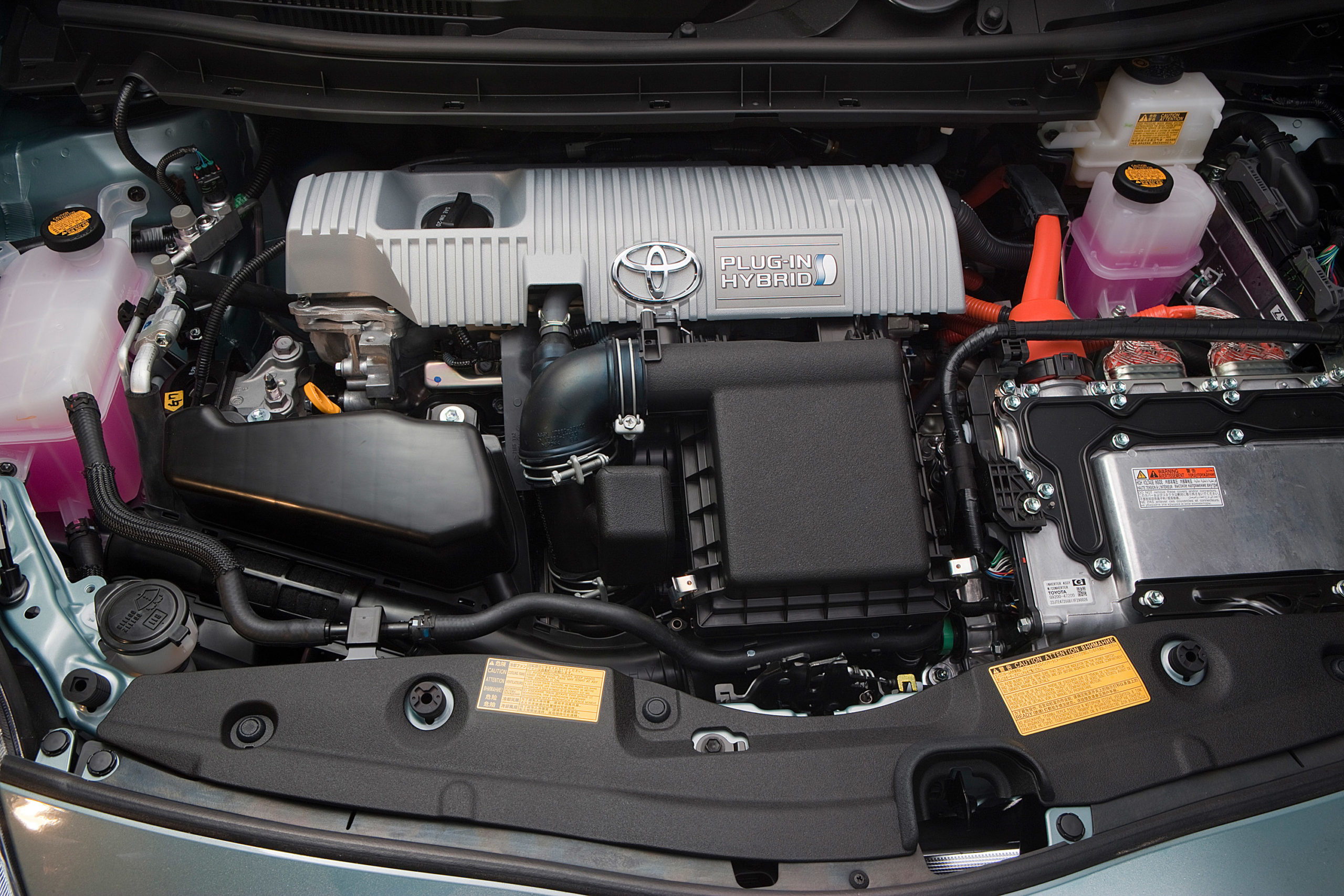
If a Prius’s engine makes a knocking sound when starting up in cold weather, this technical service bulletin might help.
If you’re looking at a 2010 model, check the engine oil level
Here’s a discussion about excessive oil consumption in the Prius’s gas engine, and another about one Prius owner who escalated their oil consumption problem to Toyota USA, which replaced the engine.

Rough roads can cause a disconcerting braking issue
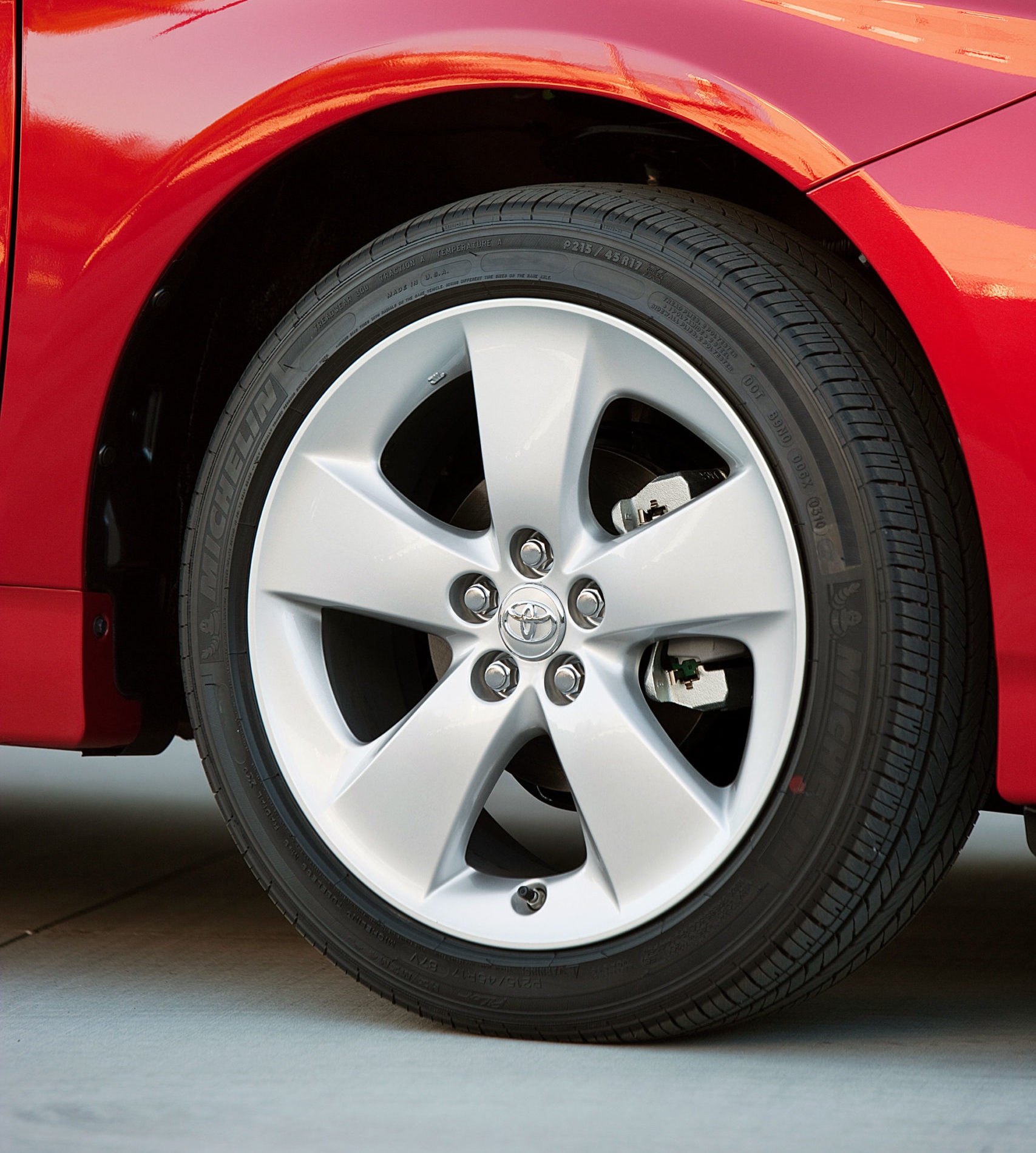
2012 Toyota Prius
During your test drive, find a quiet stretch of uneven pavement where you can brake normally. Some Prius owners say they’ve experienced a brief loss of braking on broken road surfaces that could be related to how the anti-lock braking system (ABS) interacts with the Prius’s regenerative brakes. Here’s another discussion about weird brake performance on different surfaces. Toyota recalled the 2010 Prius to address this complaint.
A clogged emissions control component can lead to a blown engine head gasket
The third-generation Prius’s engine is known for an exhaust gas recirculation (EGR) valve (it’s part of the emissions control system) that can clog up with carbon and, if left clogged for too long, cause the engine’s head gasket to blow. Servicing or replacing a clogged EGR valve is a relatively inexpensive way to avoid the much more expensive job of replacing a blown head gasket.
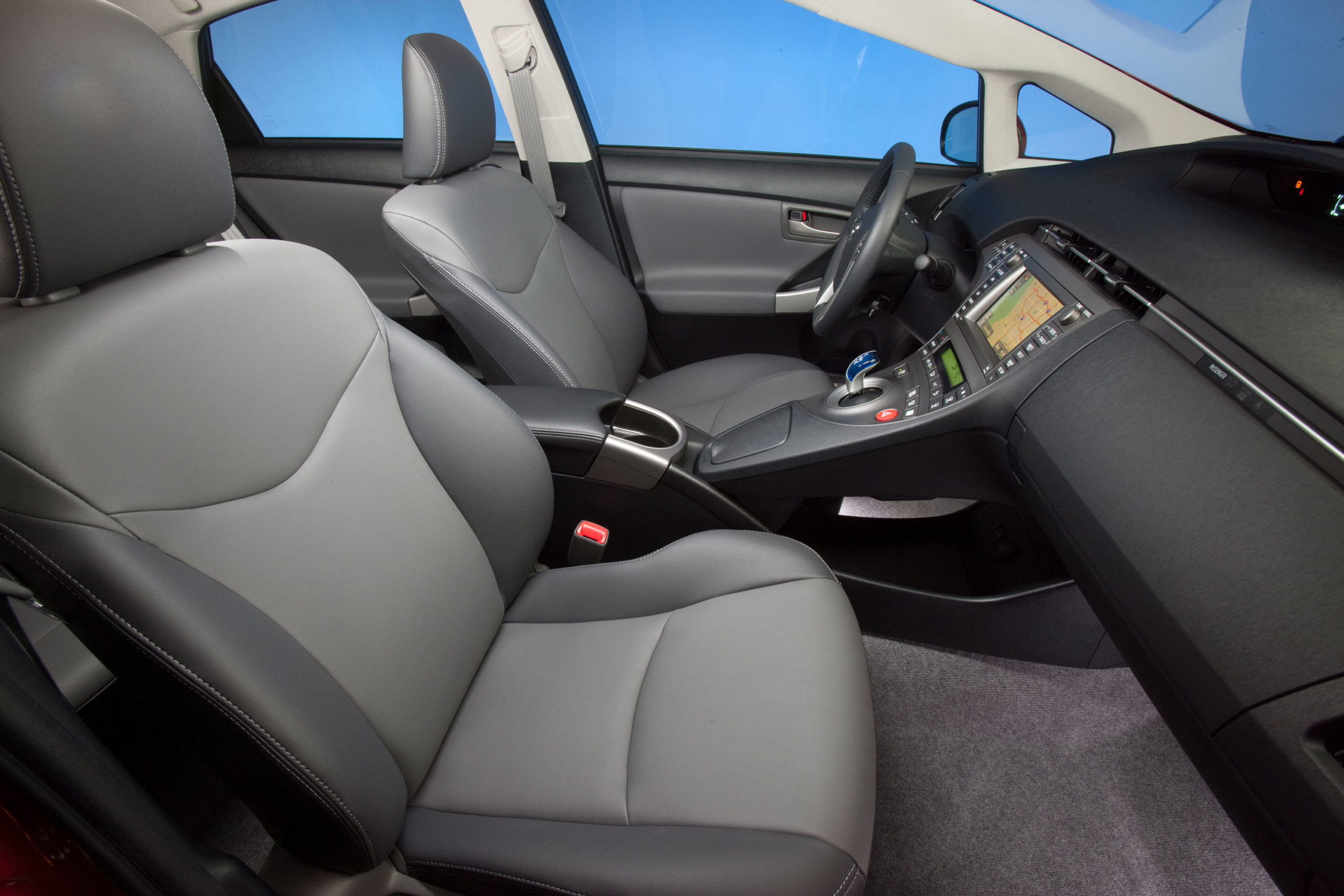
2012 Toyota Prius
This electronic component can overheat and leave you stranded
An LA Times article from 2018 discusses a known problem in which an electronic part called an inverter can overheat, fail, and render a third-generation Prius unable to drive. This issue prompted Toyota to issue a recall that same year, which we’ve listed below.
Some owners dislike the Prius’s navigation and phone integration systems
If you’re looking for a Prius with navigation, read this thread about the system’s user-friendliness – or lack thereof.
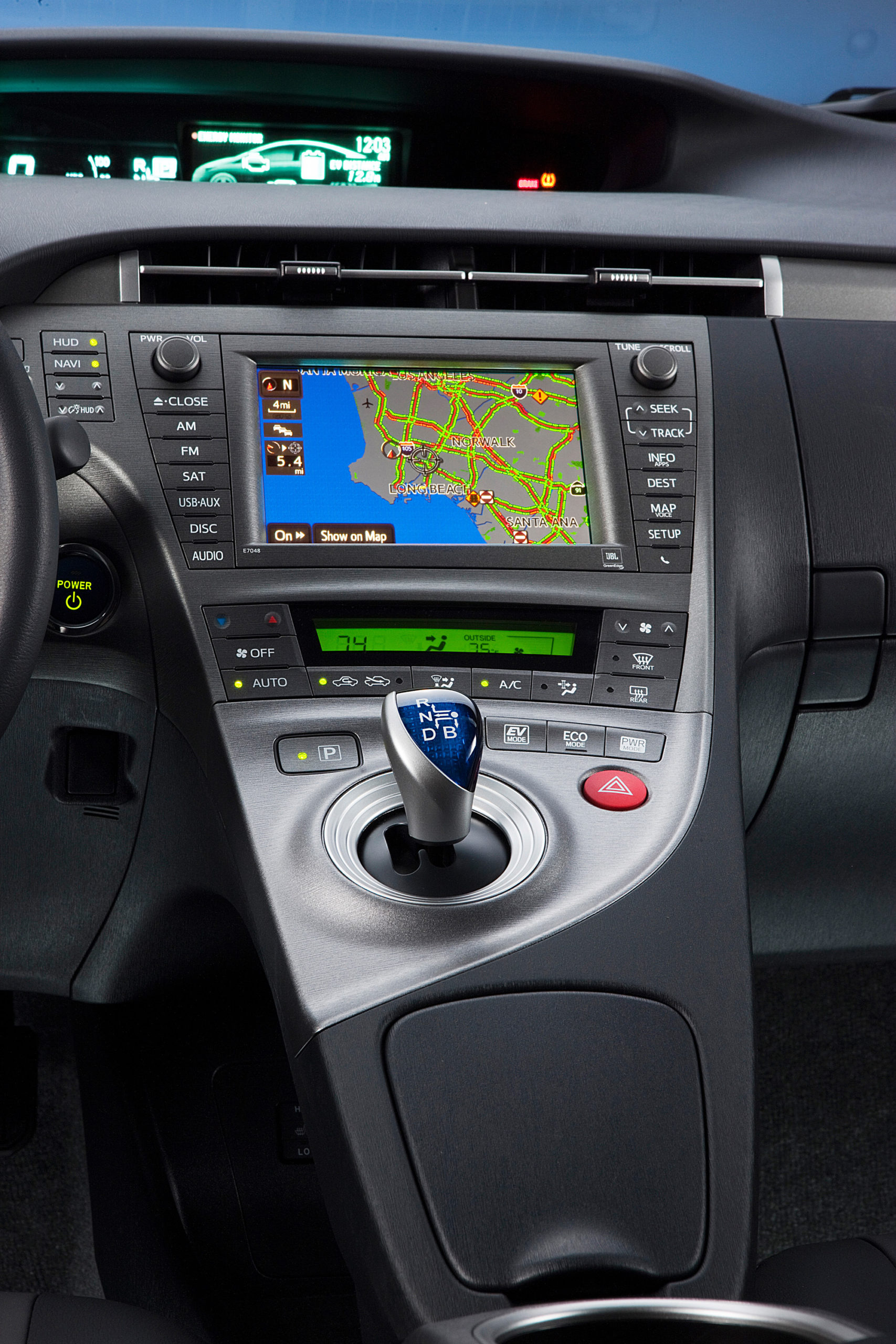
Some Prius models come with a smartphone integration platform called Entune. It is also widely disliked by Prius owners. If you do use and enjoy Entune, here’s a discussion about how software updates can affect the system’s functionality.
Finally, watch for these potentially annoying interior quirks
When test-driving a used Prius, watch out for the “ghosting” effect owners here say creates annoying visual distractions in the windshield.
Finally, in this thread, third-generation Prius owners discuss the car’s various cabin and dashboard rattles.
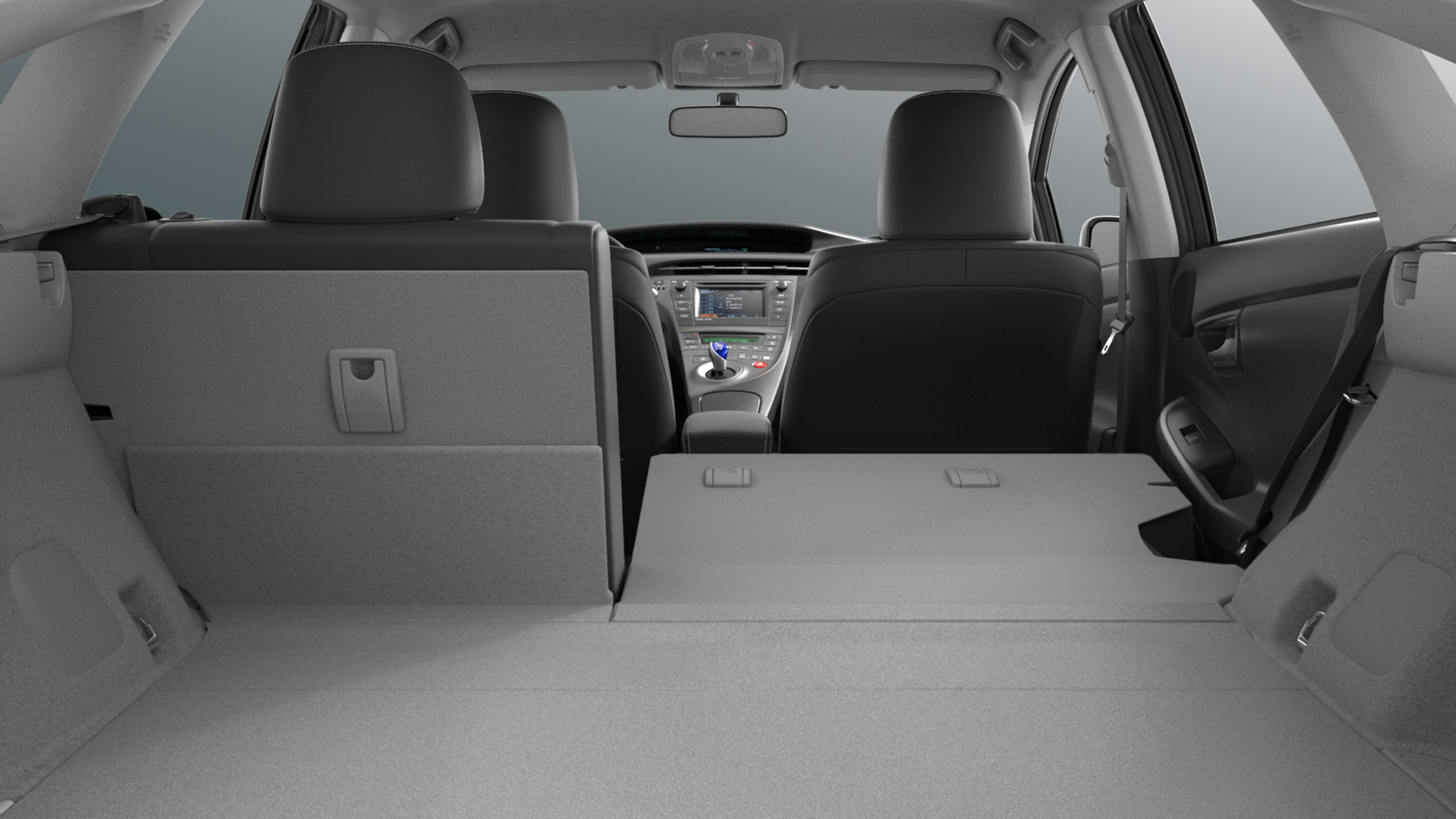
2015 Toyota Prius
Safety ratings
From the Insurance Institute for Highway Safety (IIHS), the 2010 Toyota Prius got “good” ratings in the organization’s moderate overlap front, side, and roof strength tests, which noted an “acceptable” risk of driver head and neck injuries in frontal crashes, and an “acceptable” rating for the car’s structure and safety cage in side crashes. All of the IIHS’s other injury measures for the Prius were “good.”
In 2013, the IIHS conducted its first test of the Prius’s available collision mitigation features, which met the organization’s performance requirements.
In 2014, the IIHS introduced its small overall front crash test, which is a more challenging measurement of a car’s structural ability to protect its occupants. In this test, the Prius got an “acceptable” overall rating and a “marginal” score for its structure and safety cage. The IIHS also noted the driver’s airbag didn’t do a good job of protecting the driver’s head.
The U.S. National Highway Traffic Safety Administration (NHTSA) gave the 2010 Toyota Prius five and four stars, respectively, for driver and front passenger protection in its frontal crash test, and five and four stars – again, respectively — for front and rear passenger side impact protection. In 2011, the NHTSA tested the Prius again and upgraded the car’s side impact protection ratings to five stars all around.
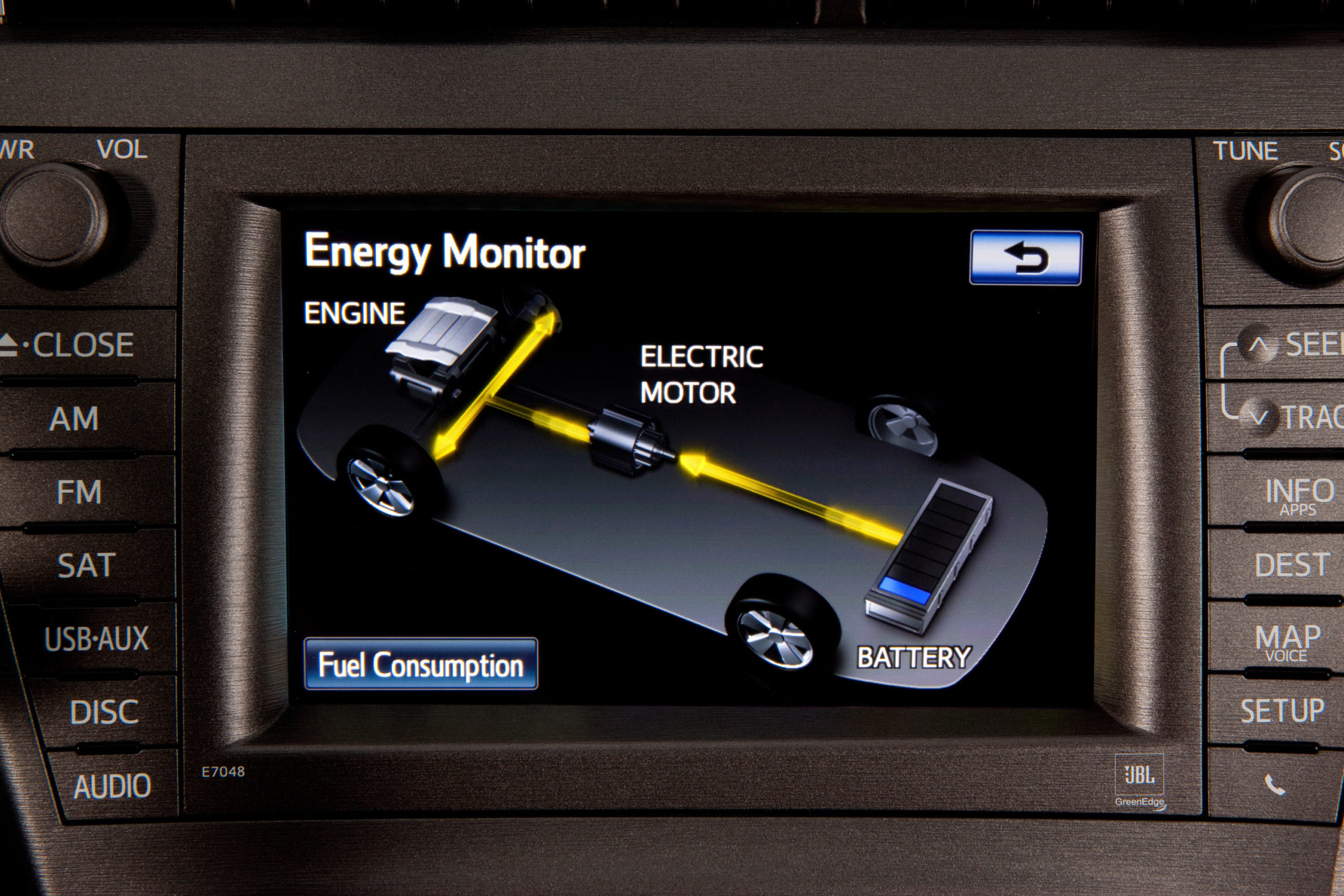
Recalls
This 2010 Prius recall addresses inconsistent brake performance after the ABS is activated.
Here’s another brake-related recall to replace faulty power brake boosters.
This 2016 recall fixes side curtain airbags that could deploy unnecessarily.
In 2018, Toyota recalled more than 23,000 third-gen Priuses for a software update designed to prevent a sudden loss of power.
In 2020, the company recalled more Priuses from 2014 and 2015 for the same issue.
